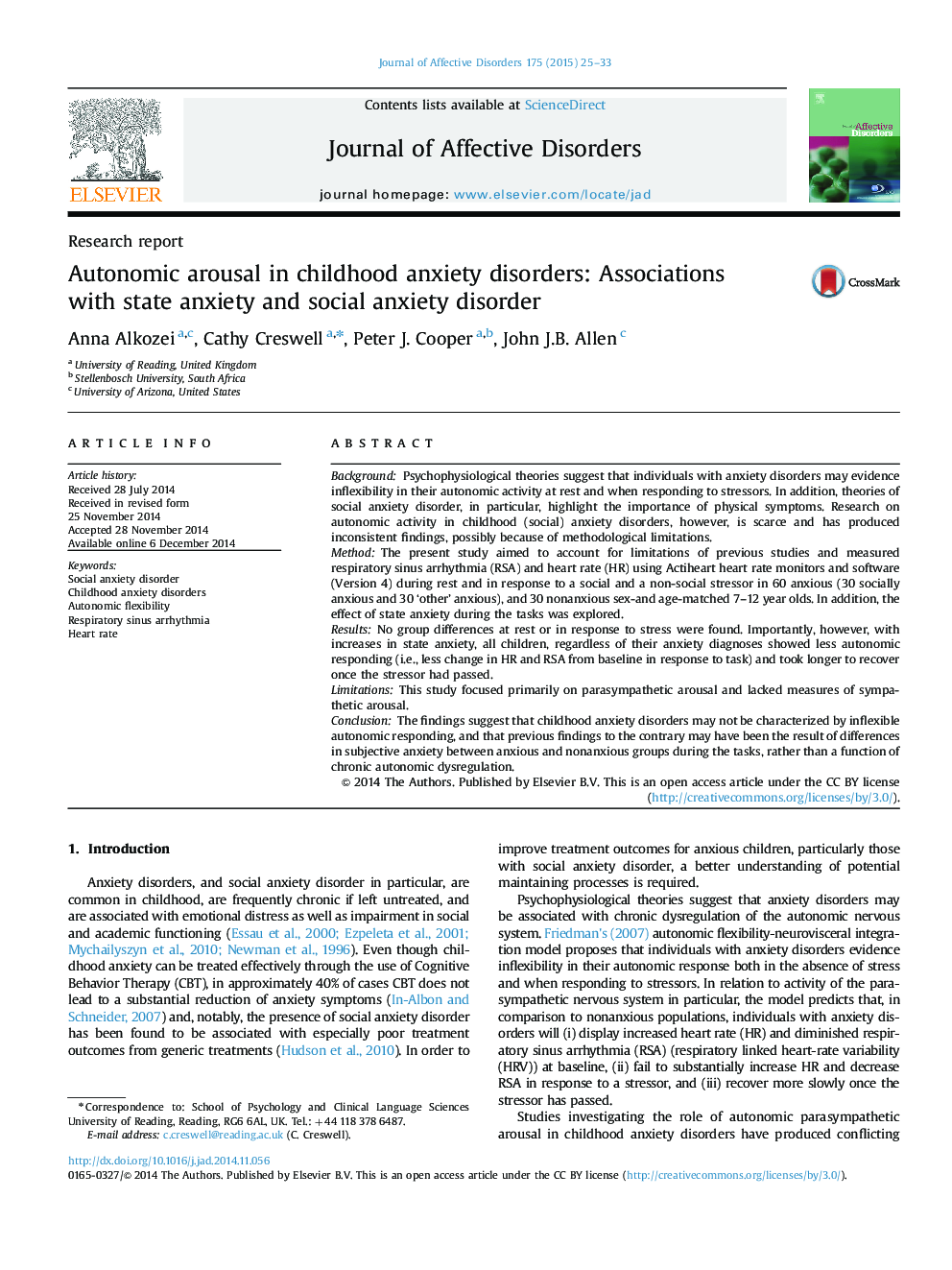| Article ID | Journal | Published Year | Pages | File Type |
|---|---|---|---|---|
| 6231912 | Journal of Affective Disorders | 2015 | 9 Pages |
BackgroundPsychophysiological theories suggest that individuals with anxiety disorders may evidence inflexibility in their autonomic activity at rest and when responding to stressors. In addition, theories of social anxiety disorder, in particular, highlight the importance of physical symptoms. Research on autonomic activity in childhood (social) anxiety disorders, however, is scarce and has produced inconsistent findings, possibly because of methodological limitations.MethodThe present study aimed to account for limitations of previous studies and measured respiratory sinus arrhythmia (RSA) and heart rate (HR) using Actiheart heart rate monitors and software (Version 4) during rest and in response to a social and a non-social stressor in 60 anxious (30 socially anxious and 30 'other' anxious), and 30 nonanxious sex-and age-matched 7-12 year olds. In addition, the effect of state anxiety during the tasks was explored.ResultsNo group differences at rest or in response to stress were found. Importantly, however, with increases in state anxiety, all children, regardless of their anxiety diagnoses showed less autonomic responding (i.e., less change in HR and RSA from baseline in response to task) and took longer to recover once the stressor had passed.LimitationsThis study focused primarily on parasympathetic arousal and lacked measures of sympathetic arousal.ConclusionThe findings suggest that childhood anxiety disorders may not be characterized by inflexible autonomic responding, and that previous findings to the contrary may have been the result of differences in subjective anxiety between anxious and nonanxious groups during the tasks, rather than a function of chronic autonomic dysregulation.
